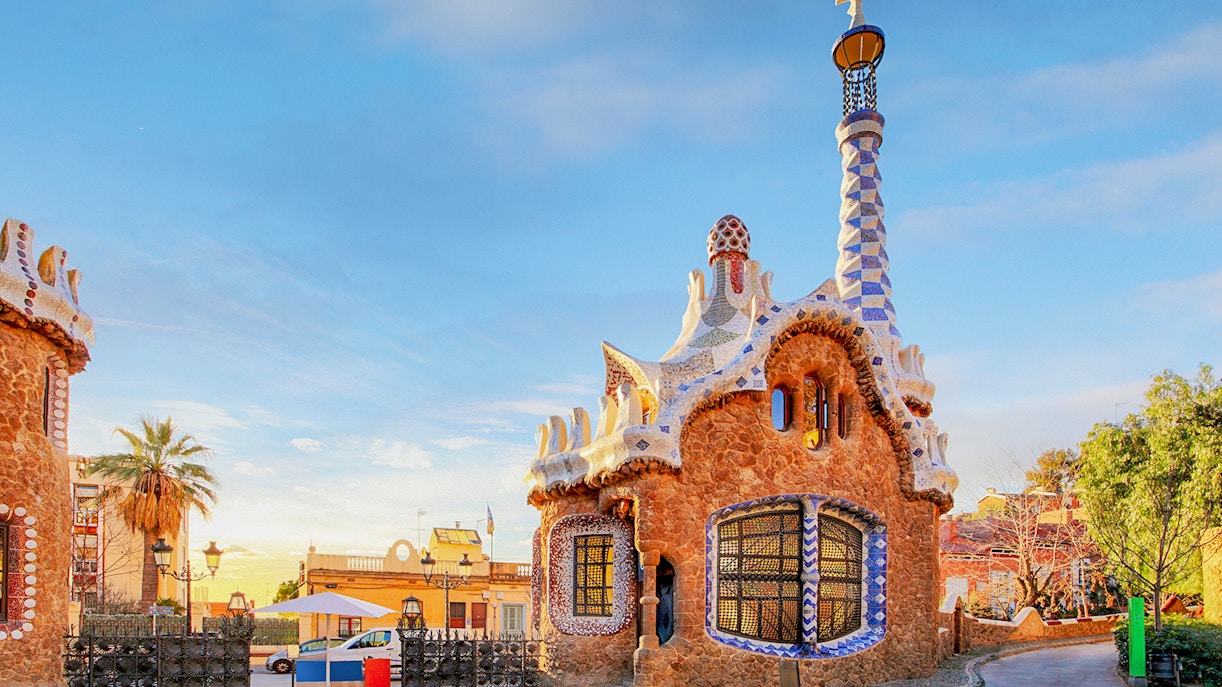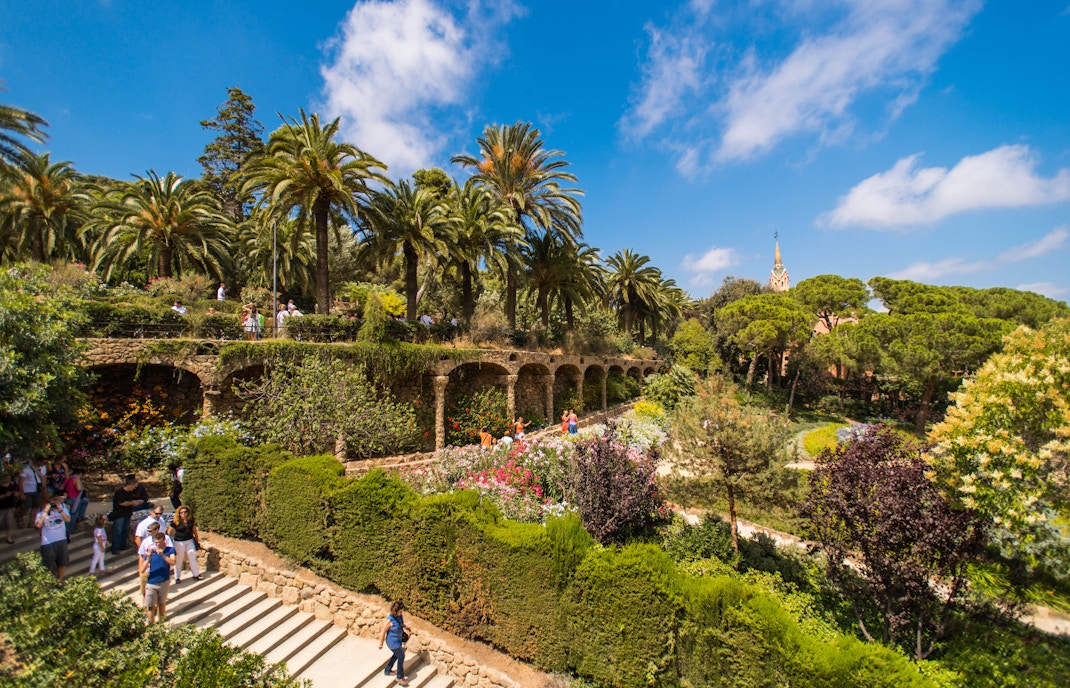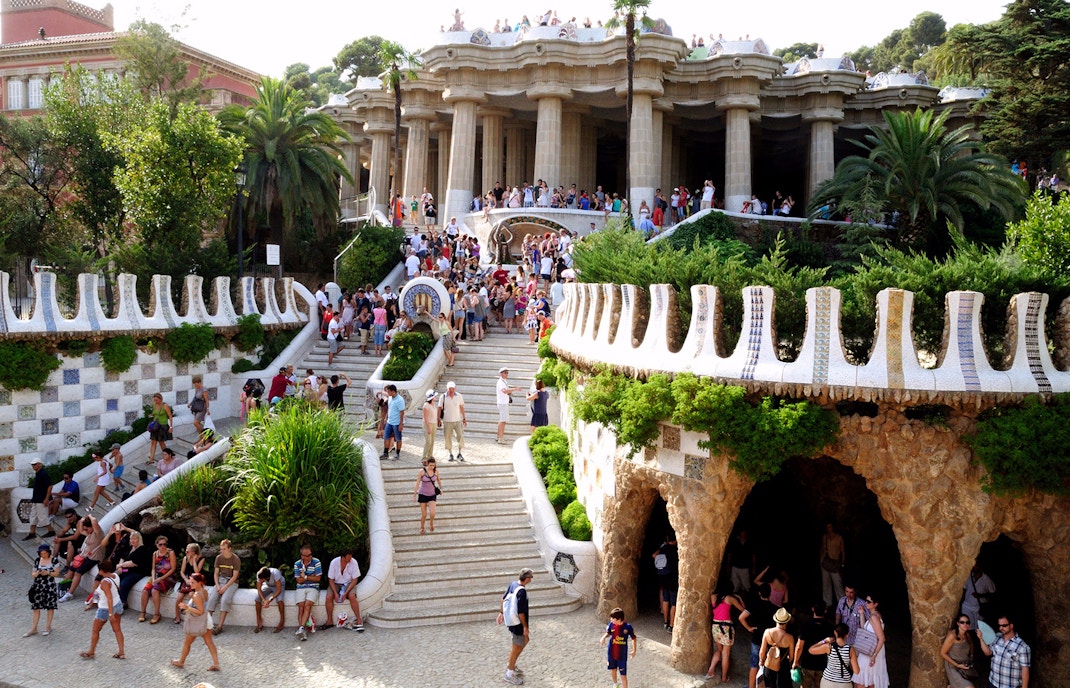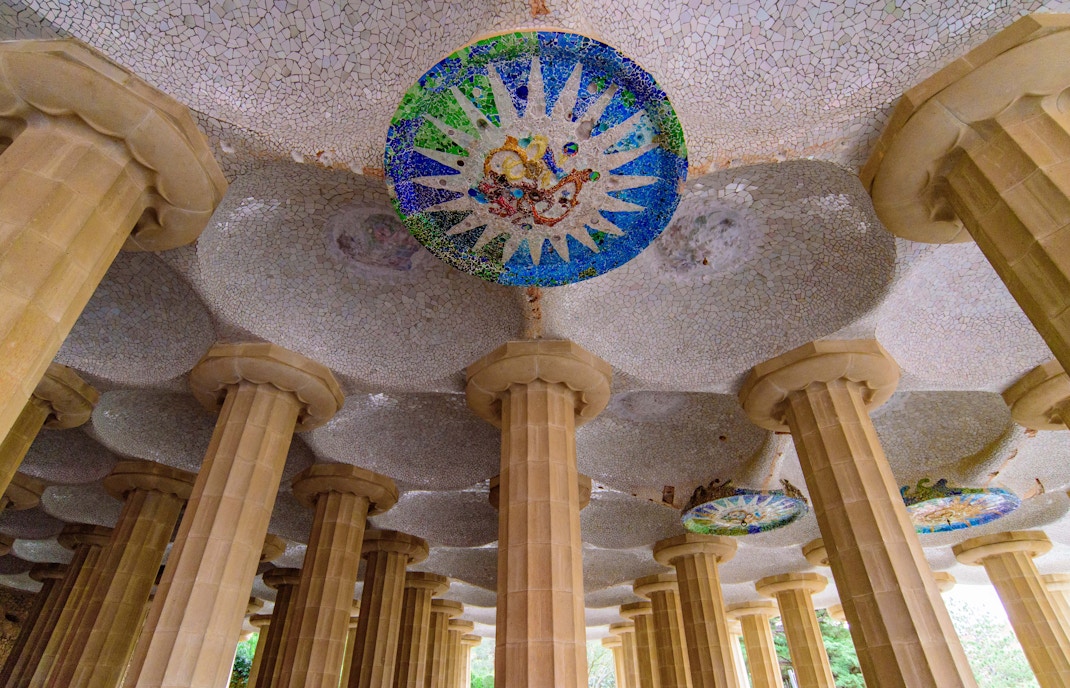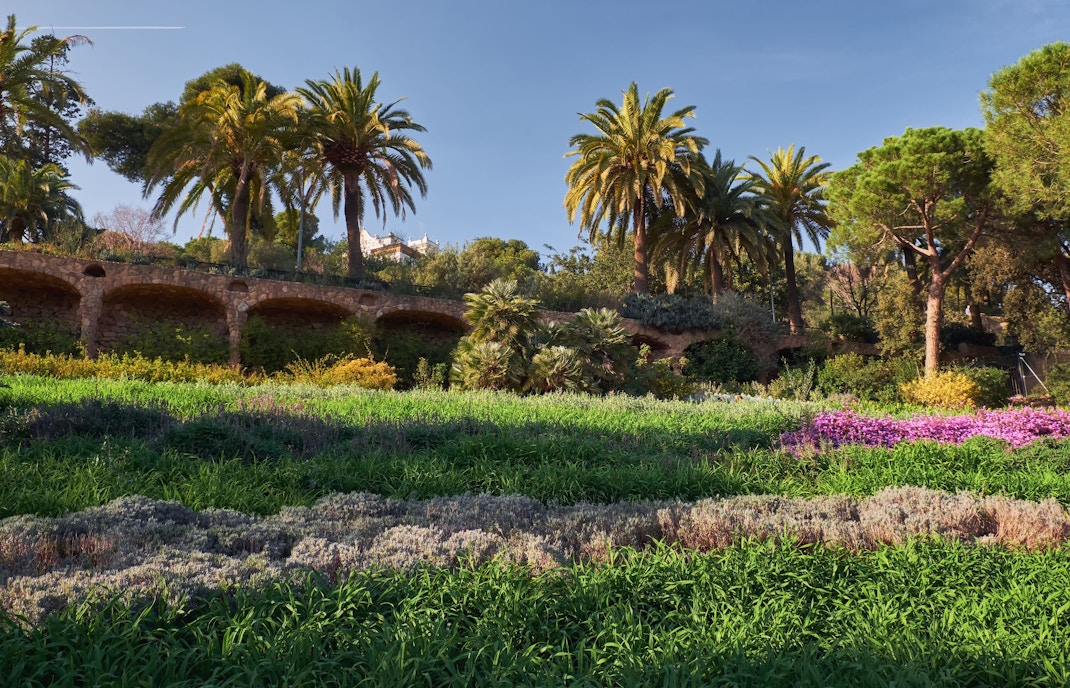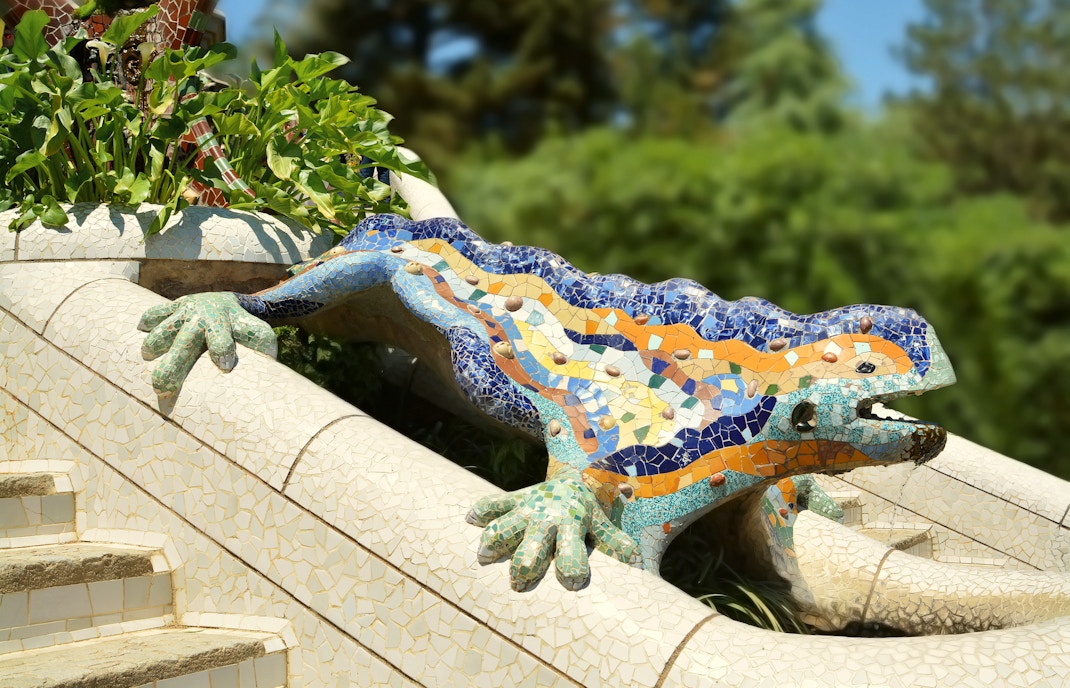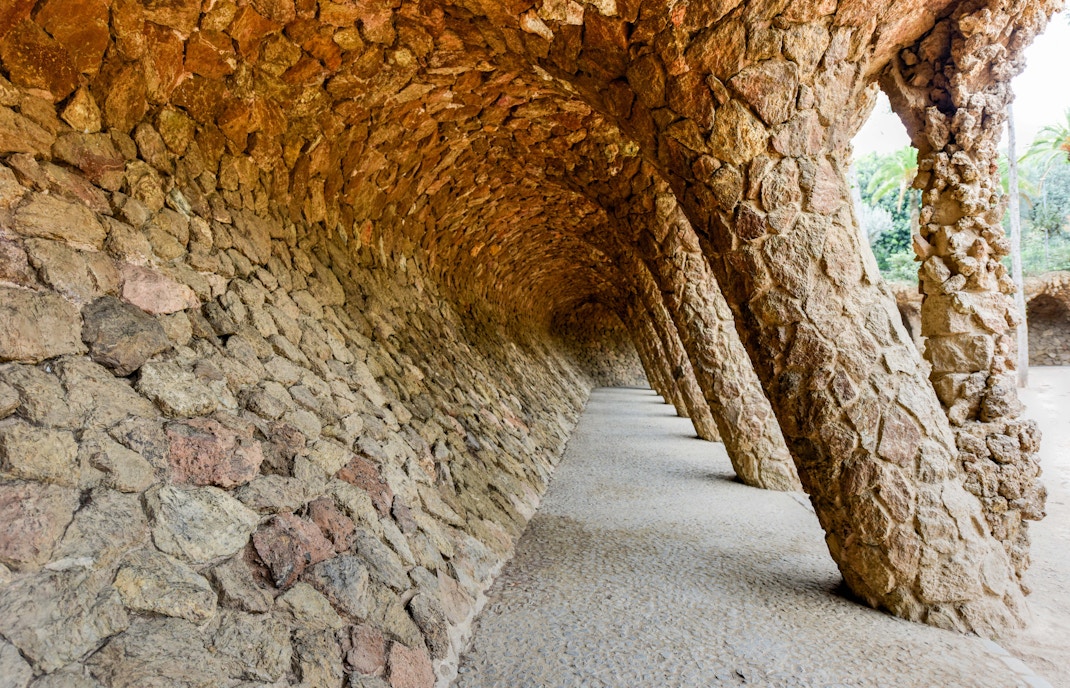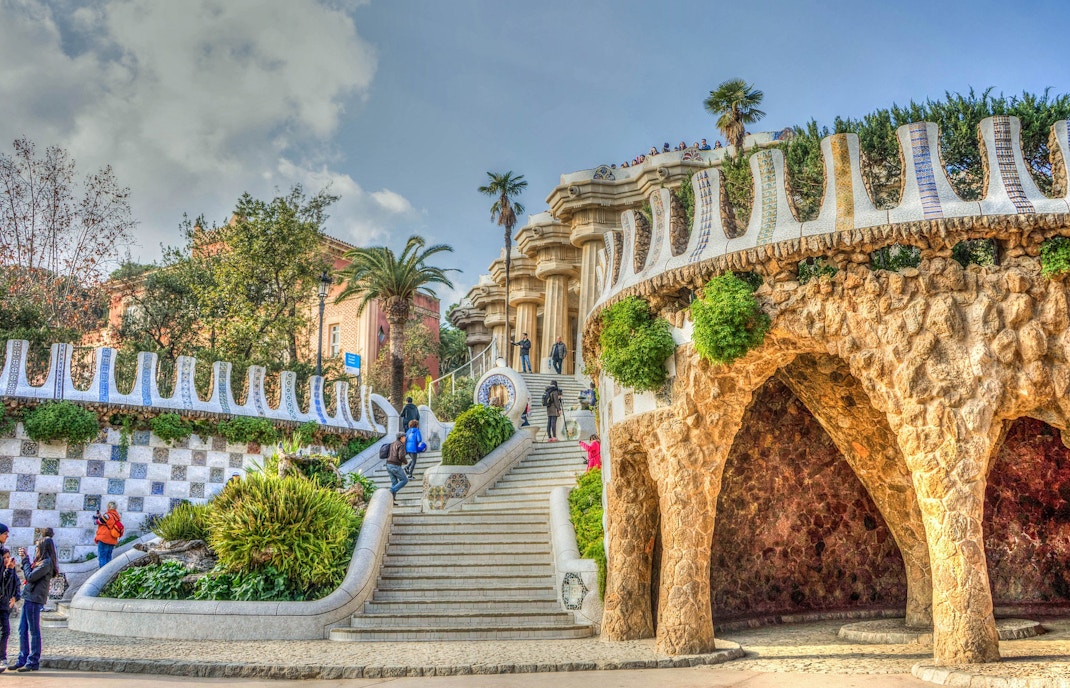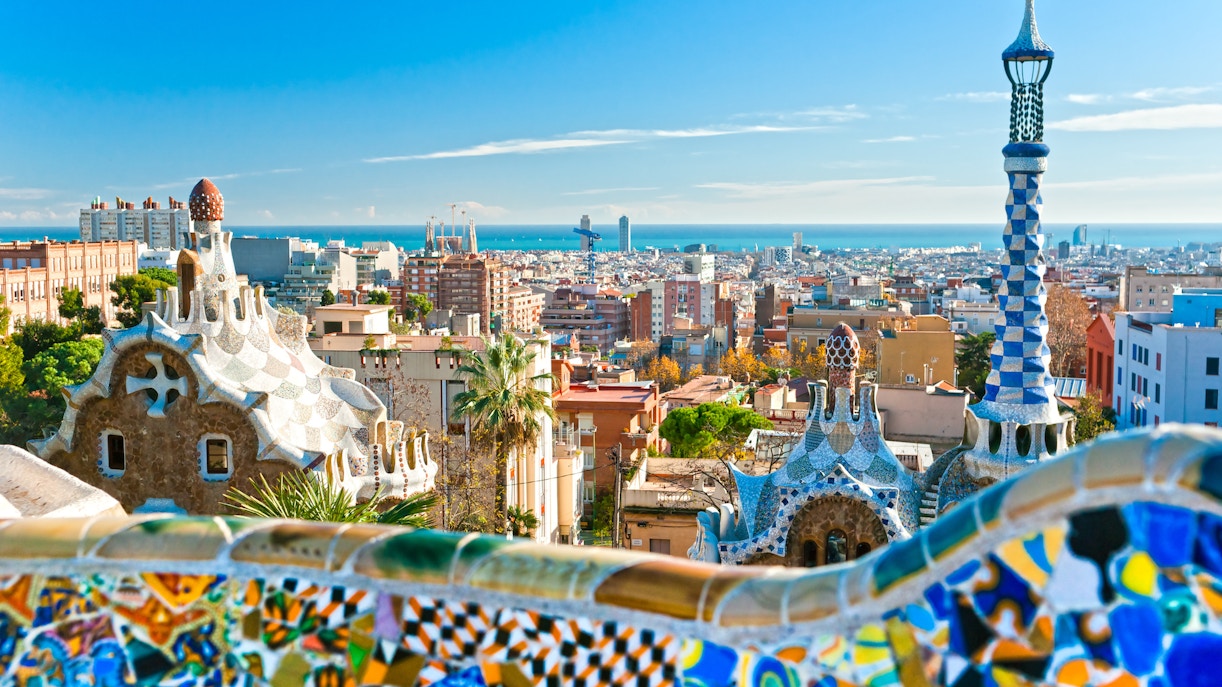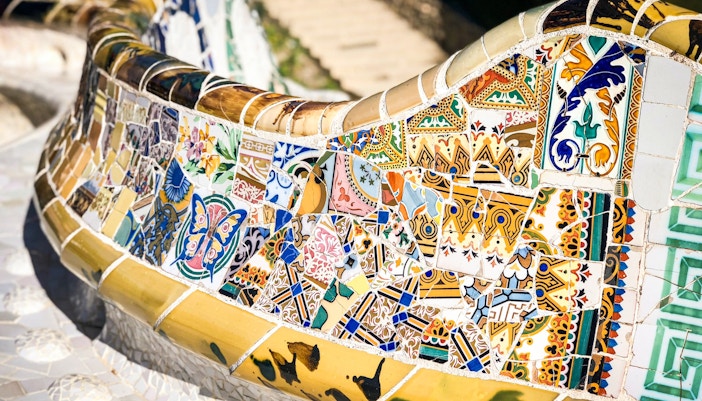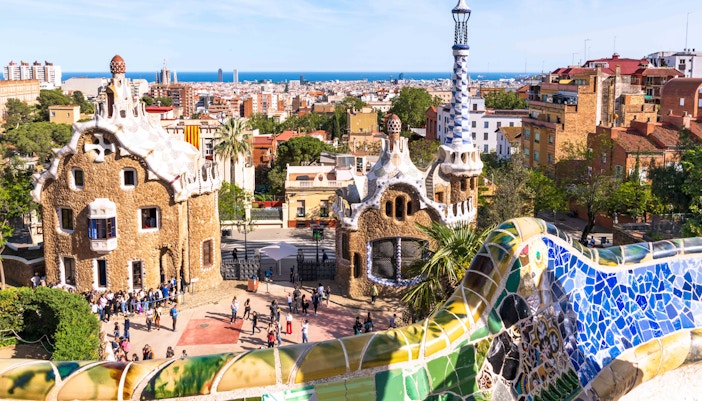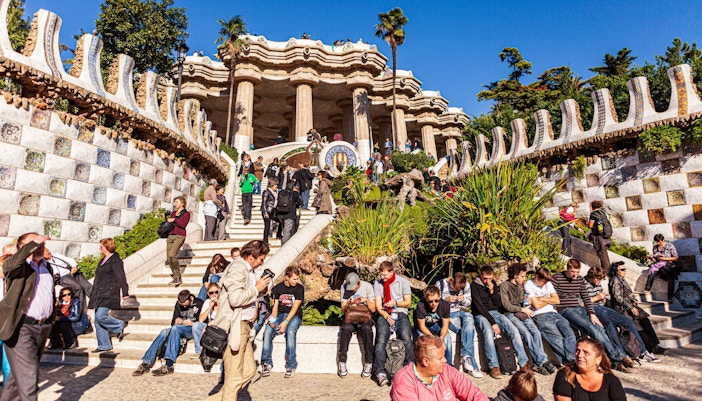The park is divided into two zones:
- Monumental Zone: The Monumental Zone, spread over 12 hectares, is the core attraction of Park Güell. It showcases a dazzling collection of spectacular buildings and some of the most iconic works of Gaudí. Although it covers only about 5% of the entire park, it packs in the wow factor and was declared a World Heritage Site in 1984. To maintain its charm (and your personal space), entry is ticketed, and access is limited to 1,400 visitors every 30 minutes.
- Forest Zone: Right next door, this zone sprawls across 8 hectares, making up around 90% of the park’s area. This part of the park is free to enter and open to all. Here, you'll find lush gardens, shaded trails, and masterful landscaping. Keep an eye out for exotic flora like common hawthorn and oak trees, and if you're lucky, a glimpse of the park’s resident fauna too!

